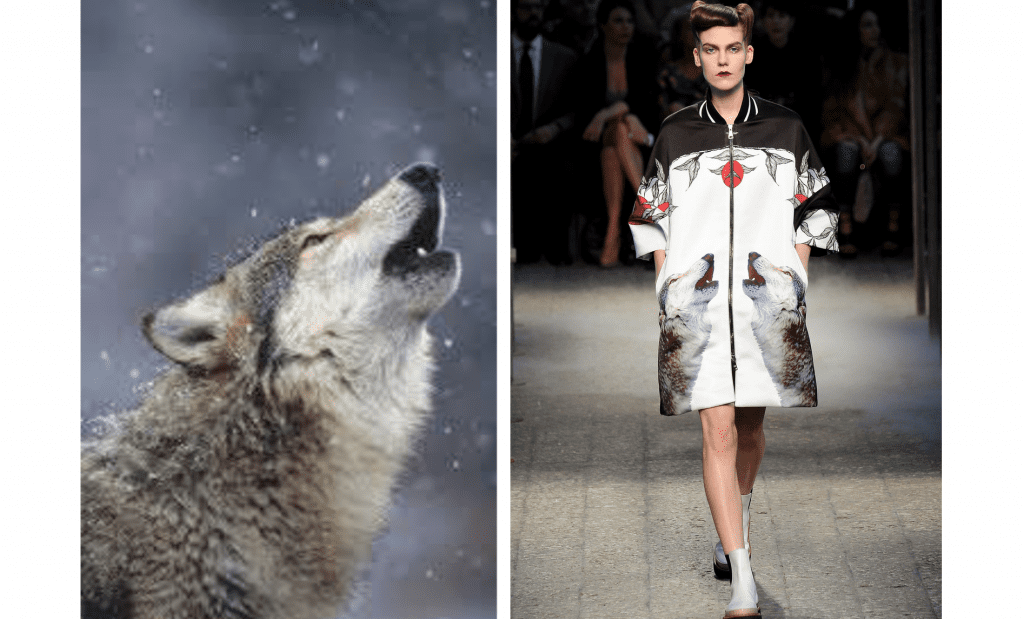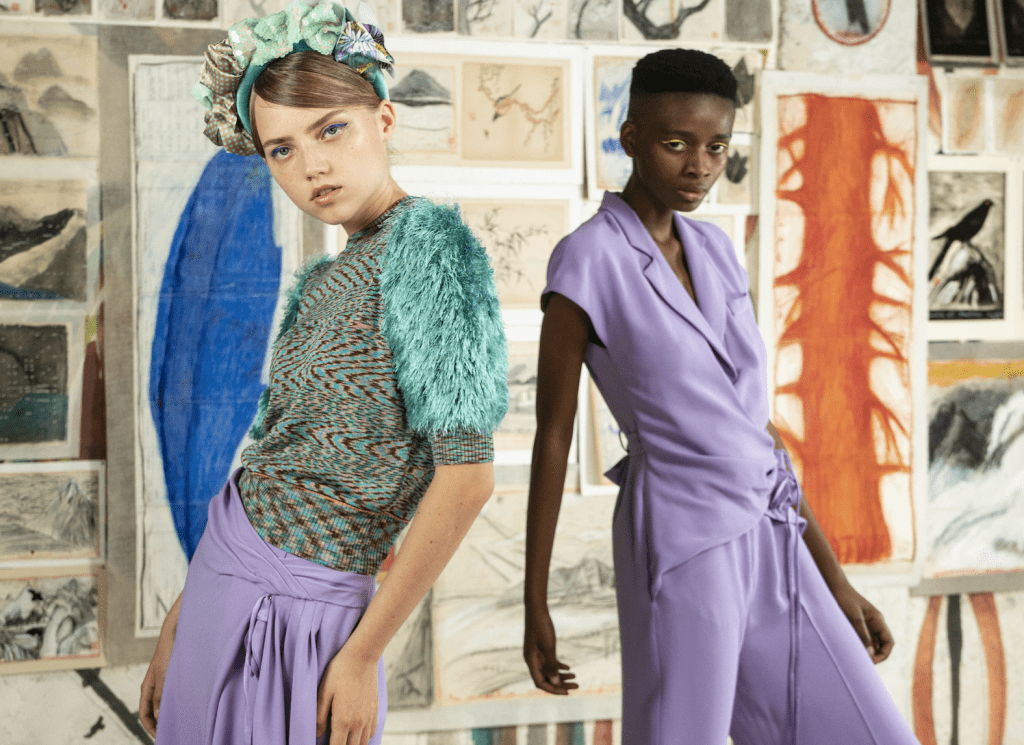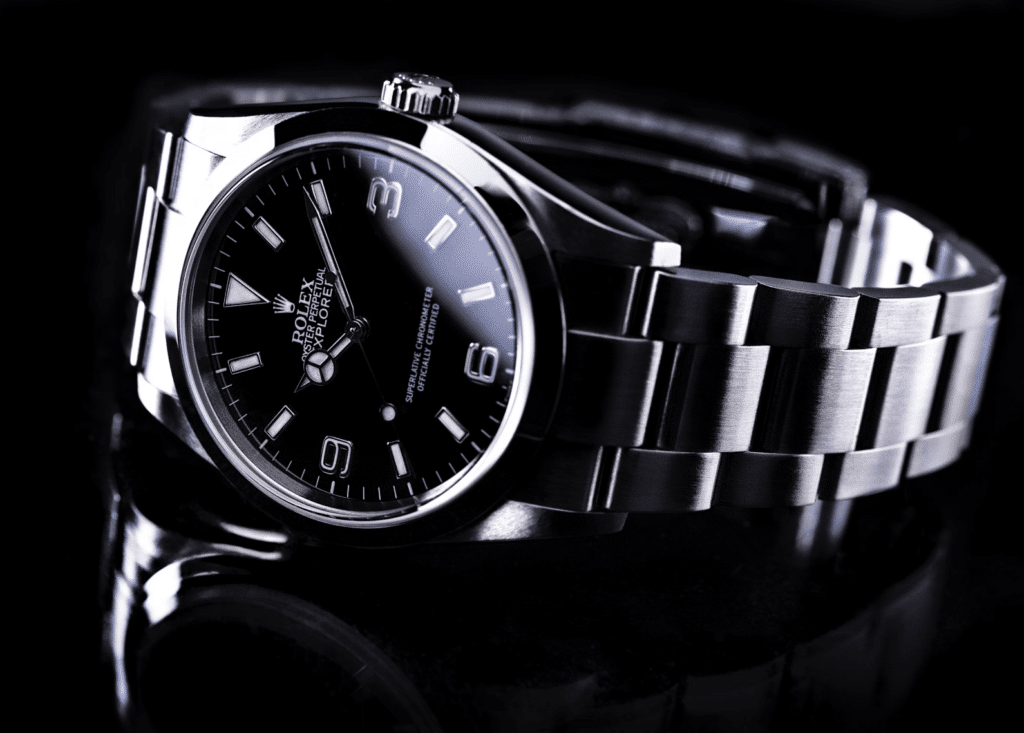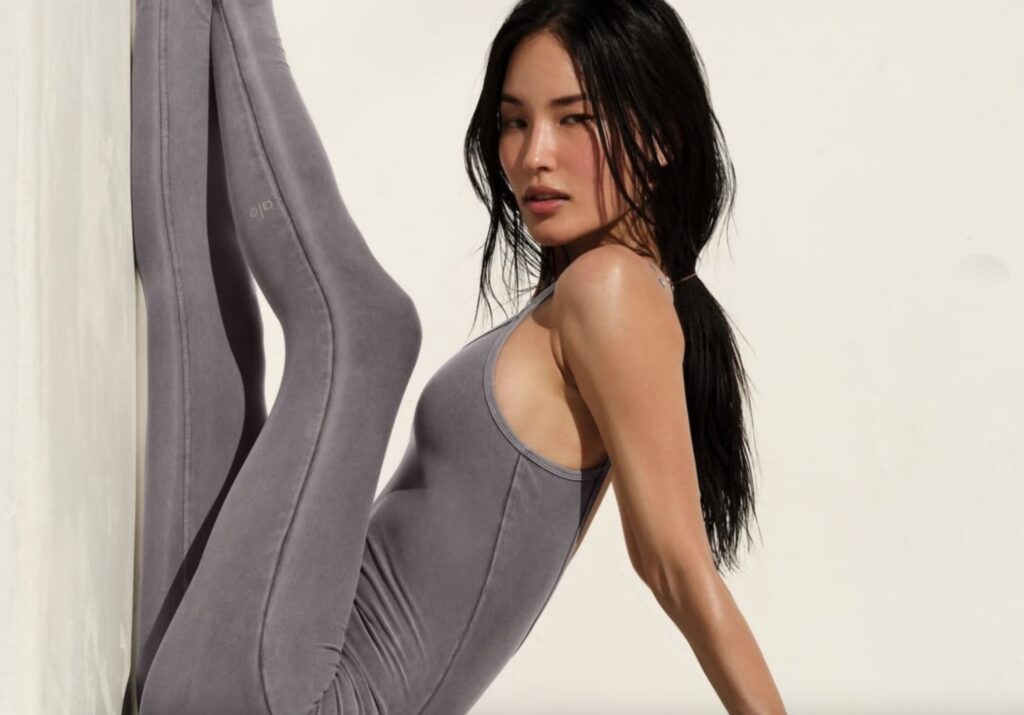In Milan in February 2014, Antonia Marras showed a collection packed with what Tim Blanks, writing for what was still Style.com at the time, called a “head-spinning stew of references.” From A-line dresses, some done up in delicate floral appliques, to mixed media jackets (patent leather-meets-woven jacquard on one, and plush fur-and-sequined embroidery on another), “the common thread” running through the collection was “the wolf and the moon,” whether that be in the form of wolf-centric videos playing in the background as models walked the runway or the wolf images that were printed or sewn onto the garments, themselves.
More than 6 years after Marras put nearly 50 looks on the runway during Milan Fashion Week, a legal fight centering on an array of garments from collection has come to a close. As it turns out, the key wolf image that could be found on a half a dozen high fashion garments in Marras’ Fall/Winter 2014 collection was one that American photographer Daniel J. Cox had taken. As Cox would argue, Marras never obtained his consent to use the image in the brand’s collection, which was “distributed and marketed worldwide,” thereby, giving rise to claims of copyright infringement.
After failing to successful settle the matter between themselves, Cox – who is best known for his work for National Geographic – filed a copyright lawsuit in Milan in March 2018, seeking injunctive relief to bar the brand from continuing to use the image and monetary damages in connection with the Italian fashion brand’s alleged infringement.
In a decision dated April 23, 2020, a panel of judges for the Court of Milan’s specialized business division sided with Cox, doing something of a deep dive into the protections provided by Italy’s Copyright Law, namely, the “enhanced” protection that is available for photographs of “artistic and creative character,” as distinct from “simple” photos.

While “simple” photos are defined as images of “people or aspects, elements or facts of natural and social life, obtained by photographic or similar process, including reproductions of works of figurative art and film stills,” Cox’s wolf photo does not fall within this category, the court held, as “the choice to portray the animal in its natural environment and in adverse climatic conditions makes the shot the result of study and careful photographic analysis by the author,” and thereby, “contributes to the recognition of its artistic value.”
The court noted that Cox employed “a wise blurring of the surrounding environment, thus, enhancing the expression of the represented subject … and evoking, in this way, peculiar suggestions in the observer such as to go beyond the mere graphic representation of the animal,” which enables the photo to be considered one of “artistic and creative character,” and subject to heightened protection.
As for the use of the photo by Antonia Marras, the court held that such commercial use “constitutes an open violation of the author’s right to compensation for damages,” rejecting the brand’s argument that it should be shielded from infringement liability because of the photo’s presence on online search engines, such as Google. To this, the court held that “the mere availability on the web of a photograph certainly does not constitute a presumption of absence of authoritative rights, on the contrary, the burden of ascertaining whether or not third parties have rights.”
Finding that Antonio Marras “illegitimately reproduced” Cox’s photo, the court has ordered the brand to pay nearly $52,000 in damage and legal fees, a sum that Cox’s counsel, Gianpaolo Todisco of Milan-based firm Clovers, says is largely in line with the “damages fees that courts in Europe usually recognize in litigation cases,” and ordered that the brand refrain from engaging in such infringing conduct in the future.
The case is Daniel J. Cox v. Antonio Marras S.R.L., 14054/2018.














